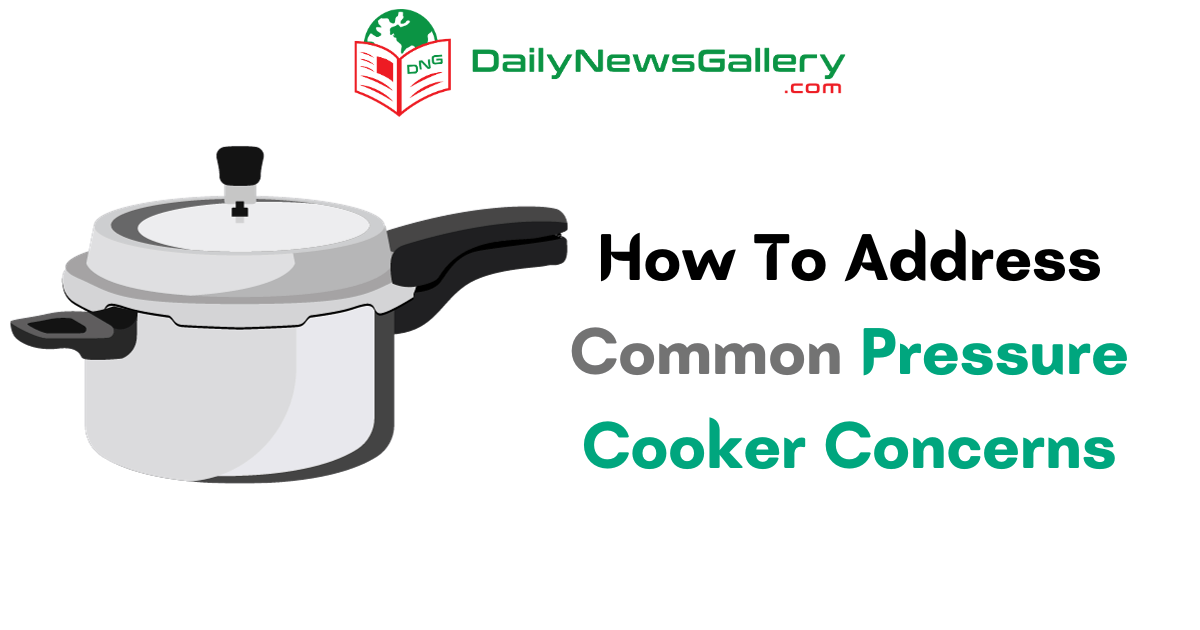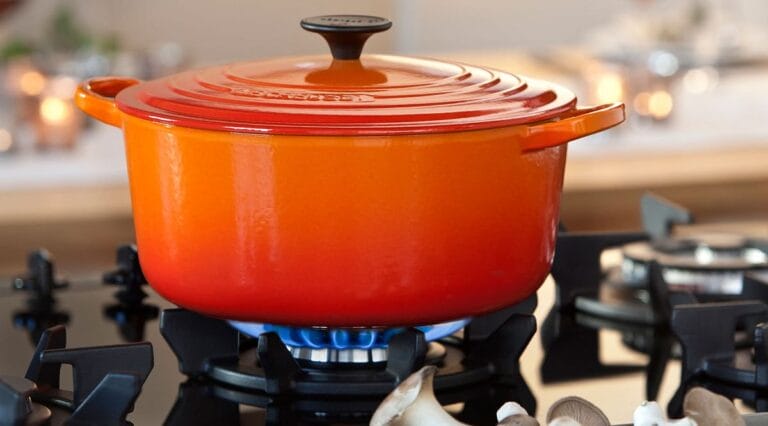
Looking to learn how to address common pressure cooker concerns? You’ve come to the right place! Pressure cookers are fantastic kitchen appliances that can help you prepare delicious meals in no time. However, like any cooking tool, they can pose some challenges.
But don’t worry, we’ve got you covered! In this guide, we’ll walk you through the most common pressure cooker concerns and give you practical tips to overcome them. So let’s dive in and conquer those pressure cooker worries together!
Now, you might be wondering, why should I bother learning about pressure cooker concerns. Well, here’s the thing: understanding and addressing these concerns will not only help you cook with confidence but also ensure the safety and longevity of your pressure cooker. Plus, it will save you from potential mishaps in the kitchen. So, buckle up and get ready to become a pressure-cooking pro!
In this article, we’ll cover a range of common pressure cooker concerns, from dealing with steam release, and excessive cooking times, to choosing the right pressure cooking method. We’ll provide you with easy-to-follow solutions, helpful tips, and even some troubleshooting advice. So, no matter if you’re a newbie or a seasoned cook, get ready to unlock the full potential of your pressure cooker and unleash your culinary creativity!

How to Address Common Pressure Cooker Concerns?
If you’re encountering common pressure cooker issues, follow these steps to address them:
- Check the sealing ring for tightness.
- Inspect the pressure release valve for any blockages.
- Ensure the float valve is clean and moves freely.
- Clean the vent pipe regularly.
- Take proper care when handling the pressure cooker to prevent damage.
By following these steps, you can easily address common pressure cooker concerns and enjoy hassle-free cooking!
1. Leaking Steam
A common issue that many pressure cooker users encounter is the leaking of steam from the appliance. This can be caused by a variety of factors, such as improperly sealing the cooker or worn-out gaskets. To address this concern, start by checking that the sealing ring or gasket is in good condition and properly positioned.
If it appears worn or damaged, it may need to be replaced. Additionally, ensure that the pressure cooker lid is correctly aligned and securely locked in place. If the problem persists, refer to the manufacturer’s instructions for troubleshooting steps specific to your pressure cooker model.
2. Overcooking or Undercooking
Achieving the perfect cooking time can be tricky with pressure cookers, particularly if you’re new to using them. Overcooked or undercooked meals can be disappointing, but don’t fret – there are ways to address this concern. Start by familiarizing yourself with the recommended cooking times for different types of dishes.
Using the appropriate recipe and following cooking time guidelines will help you avoid overcooking or undercooking. If you’re unsure, it’s better to err on the side of caution and slightly undercook the dish as it can always be cooked further if needed. Experimentation and keeping a log of cooking times for various dishes will also help you master your pressure cooker’s performance.
3. Pressure Build-Up Issues
Sometimes, pressure cookers may experience difficulty building up pressure, which can result in longer cooking times and potentially undercooked food. If you encounter this issue, inspect the pressure release valve and ensure it is clear of any debris or food particles.
Check the rubber gasket or sealing ring to make sure it is not damaged or worn out, as this can cause pressure to escape. If the problem persists, verify that the pressure cooker is being used on the correct heat source and that the pot is not overloaded with ingredients. Adjustments to cooking time may also be necessary for specific recipes.
4. Burned Food at the Bottom
Finding burned food stuck to the bottom of your pressure cooker can be disheartening. This can occur if the heat is too high or if insufficient liquid is added to the pot. To address this concern, start by ensuring that you have followed the recommended amount of liquid for your recipe. If you’re unsure, consult the manufacturer’s instructions for guidance.
Also, be mindful of the heat settings – high heat is not always necessary or recommended for pressure cooking. After cooking, allow the pressure to release naturally before opening the cooker to prevent any residual heat from scorching the food.
5. Lid Stuck or Difficult to Open
There may be instances where the pressure cooker lid becomes stuck or challenging to open after cooking. This can happen due to the build-up of pressure or if the cooker is still pressurized. Never try to force the lid open in these situations, as it can result in injury.
Instead, wait for the pressure inside the cooker to naturally release or follow the manual’s instructions for safe pressure release methods. Once the pressure has been released, the lid should be easy to open. If it remains stubborn, check for any food particles or debris around the sealing ring or gasket, as this may be hindering the lid’s release.
6. Uneven Cooking
Uneven cooking is another common concern with pressure cookers. This can occur if the heat distribution is not optimal or if the food is not arranged evenly inside the pot. To ensure even cooking, make sure that there is enough liquid to create steam and distribute heat evenly throughout the cooker.
Arrange the ingredients in an even layer, avoiding clumps or overcrowding. If you’re cooking larger cuts of meat or vegetables, consider cutting them into smaller pieces for more consistent results. Lastly, avoid opening the cooker too frequently during the cooking process, as this can disrupt the cooking temperature and result in unevenly cooked dishes.
7. Safety Concerns
Safety should always be a top priority when using a pressure cooker. To address safety concerns, make sure to carefully read and understand the manufacturer’s instructions before using the pressure cooker. Follow their guidelines for proper operation, including filling limits, maintenance, and cleaning.
Before opening the pressure cooker, ensure that all pressure has been released and that the valve is in the appropriate position. Regularly inspect and replace any worn-out or damaged parts, such as gaskets or pressure release valves. By properly maintaining your pressure cooker and using it according to the manufacturer’s instructions, you can address safety concerns and enjoy worry-free pressure cooking.
Additional Tips for Using Pressure Cookers
Intro: Now that we have explored how to address common pressure cooker concerns, here are some additional tips to enhance your pressure cooking experience and ensure successful results.
1. Use the Trivet
When cooking delicate foods, such as fish or steamed vegetables, consider using a trivet inside the pressure cooker. This will elevate the food above the liquid, preventing it from becoming soggy or overcooked. The trivet allows for gentle, even steaming, resulting in texture and flavor preservation.
2. Practice Natural Pressure Release
While pressure cookers offer the option to release pressure quickly using the quick-release method, certain dishes, such as meats or stews, benefit from a natural pressure release. This step involves allowing the pressure to release naturally over time instead of manually releasing it. Natural pressure release helps to retain moisture in the food and prevents potential sputtering or spilling that can occur with quick pressure release.
3. Invest in Accessories
Consider investing in additional accessories to expand the capabilities of your pressure cooker. Accessories such as steamer baskets, egg racks, or silicone molds can add versatility to your cooking repertoire. These accessories enable you to prepare a variety of dishes and desserts in your pressure cooker, extending its functionality beyond traditional pressure cooking.
Addressing common pressure cooker concerns is essential for optimizing your cooking experience. By troubleshooting steam leakage, overcooking or undercooking, pressure build-up issues, burnt food, lid sticking, uneven cooking, and safety concerns, you can ensure that your pressure cooker is running smoothly and providing reliable results.
Incorporating tips such as using a trivet, practicing natural pressure release, and investing in accessories can enhance your pressure cooking skills further. So, the next time you encounter an issue with your pressure cooker, refer back to this guide to find the solution and get back to enjoying delicious and hassle-free meals. Happy pressure cooking!
Frequently Asked Questions
Welcome to our FAQ section where we address common concerns when it comes to using a pressure cooker. Whether you’re a seasoned pro or new to pressure cooking, we’ve got you covered with these helpful answers!
1. How do I safely release the pressure after cooking?
After your pressure cooking cycle is complete, you have two options for releasing the pressure. The first method is called natural release, where you simply let the pressure subside on its own. This can take anywhere from 10 to 30 minutes, depending on the recipe and the amount of food inside the cooker.
The second method is manual release, sometimes known as quick release, which involves carefully turning the pressure release valve to release the steam. Always use caution and follow your specific pressure cooker’s instructions to ensure safe pressure release.
Remember, before opening the cooker, make sure all pressure has been released by checking the pressure indicator or float valve. Additionally, it’s crucial to keep your hands and face away from the steam vent during the pressure release process to prevent any potential burns.
2. What should I do if my pressure cooker isn’t reaching pressure?
If your pressure cooker isn’t reaching the desired pressure, there are a few troubleshooting tips you can try. First, check that the pressure cooker’s sealing ring, gasket, or rubber seal is in good condition and properly positioned. If it’s worn out or damaged, it may need to be replaced. Another potential issue could be insufficient liquid in the cooker. Ensure you have enough liquid, such as broth or water, as specified in your recipe’s instructions.
Additionally, make sure the pressure regulator or valve is clean and not clogged. If it’s dirty, gently remove it and clean it thoroughly. Finally, check that the pressure cooker is securely closed and the lid is properly aligned. If you’ve tried these steps and your pressure cooker still isn’t reaching pressure, it may be time to reach out to the manufacturer for further assistance.
3. What if my pressure cooker is leaking steam?
If you notice steam escaping from your pressure cooker, it’s important to address the issue promptly. First, check if the pressure cooker’s sealing ring is properly fitted and not damaged. If necessary, remove, clean, and reposition the sealing ring to ensure a proper seal. Similarly, make sure the lid is securely closed and properly aligned. Any misalignment or gaps can result in steam leakage.
If the issue persists, inspect the valves and vents for any clogs or debris. Clean them thoroughly to ensure proper functioning. It’s also crucial to check that the pressure release valve is in the correct position for pressurizing the cooker. If none of these troubleshooting steps resolve the steam leakage, consider contacting the manufacturer for further assistance.
4. How can I prevent food from sticking to the bottom of the pressure cooker?
To prevent food from sticking to the bottom of the pressure cooker, ensure you use enough cooking liquid, such as broth or water, as specified in the recipe. This liquid creates steam, which helps prevent sticking and burning. It’s also essential to deglaze the bottom of the cooker before adding the main ingredients. This means using a wooden spoon or spatula to scrape off any food particles or residue left from browning or sautéing.
Another helpful tip is to use cooking oils sparingly, as excessive oil can contribute to sticking. If you’re concerned about sticking, consider using a non-stick cooking spray or lining the bottom of the cooker with parchment paper. Additionally, avoid overcrowding the pressure cooker as it can lead to uneven cooking and increased likelihood of sticking. Taking these precautions will help ensure your food doesn’t stick to the bottom of the pressure cooker.
5. How do I safely clean my pressure cooker?
Cleaning your pressure cooker is a breeze with these simple steps. First, ensure the pressure cooker has cooled down completely before attempting to clean it. Remove any detachable parts, such as the sealing ring and pressure regulator, and wash them with warm, soapy water. Rinse them thoroughly and let them air dry.
For the main body of the pressure cooker, wipe it down with a damp cloth or sponge. If there are any stubborn food residues, you can use a non-abrasive scrub brush or sponge to gently remove them. Avoid using harsh cleaning agents or abrasive materials that can damage the pressure cooker’s surface.
Finally, dry all the components thoroughly before reassembling your pressure cooker for future use. Following these cleaning guidelines will help keep your pressure cooker in top condition and extend its lifespan.






